This short video shows you how to use a chisel to cut open a buttonhole and mark notches.
~Sheryl Belson
This short video shows you how to use a chisel to cut open a buttonhole and mark notches.
~Sheryl Belson
With deep disappointment, we share the news that the 2021 Conference in Newport Beach has been cancelled.
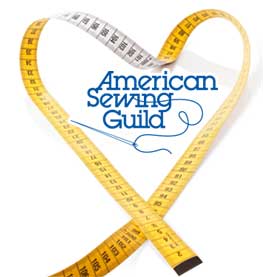 We all worked extremely hard to move the conference to October and could not have imagined the ongoing issues that would ultimately prevent the event from happening, including:
We all worked extremely hard to move the conference to October and could not have imagined the ongoing issues that would ultimately prevent the event from happening, including:
Registrations will be refunded and we understand most airlines are waiving change fees to allow those who have scheduled now to reschedule to next year’s event.
We are very hopeful that things will improve and our members will be able to safely and happily travel and join together at Conference again.
As with every negative, there are positives. We have now become quite proficient at pivoting to address ongoing changes. Our intentions for moving forward are to work with many of the teachers who would have taught in Newport Beach to convert their classes to virtual events over the coming months. In addition, we will look to work with virtual vendor events as well.
 We give our heartfelt appreciation to everyone whose hopes were as high as ours and had planned to attend this year, along with those who were rooting for us to proceed. Sincerest thanks to everyone involved in the planning, especially the Orange County Chapter President, Geri Guerra, and Special Events Chair, Diane Jakubowski.
We give our heartfelt appreciation to everyone whose hopes were as high as ours and had planned to attend this year, along with those who were rooting for us to proceed. Sincerest thanks to everyone involved in the planning, especially the Orange County Chapter President, Geri Guerra, and Special Events Chair, Diane Jakubowski.
I wish to personally thank our staff who have struggled to meet and overcome so many challenges throughout this process, along with our Directors whose guidance and support has been so valuable. An abundance of gratitude goes out to the educators that have worked with us to provide class offerings for this year’s conference.
Finally, we send our thanks to each of you, our members, for your patience and understanding as we navigate these waters and once again begin the process of creating new plans. We will continue to keep you updated as new information is available.
Sincerely,
Margo Martin
Executive Director
We are continuing our Fabric Sources series of articles with education on fabrics made from living things. While we are all familiar with leather being used in fashion and home décor, for the purpose of this article, we will only be exploring the sources that create woven or knitted fabrics. In this 3-part section, we’ll start with discussing silk and continue our next 2 articles with wool and “other.”
Plants (part 1) | Plants (part 2)
Living Things: Silk | Living Things: Wool | Other Living Things
Minerals: Acrylics, Polyester, & Nylon (part 1) | Minerals: Spandex and Rayon (part 2)
Did you know that silk is made from two different sources? The most common silk comes from the silkworm. But there is also a far less common silk made from strands made by spiders. Both produce a natural protein fiber which can be woven into textiles. Let’s talk about the differences.
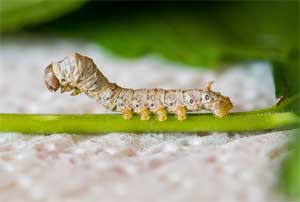 The best-known type of silk is obtained from the cocoons of the silk moth. This moth is a completely domesticated moth and does not exist in the wild. The practice of breeding silkworms to produce raw silk (a.k.a. sericulture) began over 5,000 years ago in China but soon spread beyond to India, Korea, Nepal, Japan, and the West.
The best-known type of silk is obtained from the cocoons of the silk moth. This moth is a completely domesticated moth and does not exist in the wild. The practice of breeding silkworms to produce raw silk (a.k.a. sericulture) began over 5,000 years ago in China but soon spread beyond to India, Korea, Nepal, Japan, and the West.
How is it processed
Silkworm cocoons are placed in hot water to soften the gum which, sadly, kills the insect inside. The cocoons are softly brushed to find the end of the filaments. The cocoon is unwound carefully to maintain the integrity of the fibers, which can be very long. The ends of the filaments are then reeled on to a wheel and twisted (spun) into the desired strength and thickness. Finally, the spun thread is boiled in soap and water (called degumming) to prepare it for finishing and dying. To get a glimpse of the process, watch this 2-minute video:
Pros
Silk is a luxurious fiber that can be woven in a wide variety of textures, smooth like China and Thai silk or nubby like silk shantung and silk tussah. It is a strong fiber that creates a comfortable fabric.
Cons
Silk can get quite expensive and stains easily. It usually requires dry cleaning since laundering silk typically changes the texture and sheen of the fabric. But if that is the look and feel you are going for, launder away. You be the judge!
Impact on the silkworms
Approximately 3,000 silkworms die to make every pound of silk. Animal activist groups believe that silkworms experience fear and have a physical response to pain in the processing.
Where can I buy it?
Silk made from silkworm cocoons is a fabric you will not have any trouble finding. Since it can get expensive, you can save a few pennies by buying it with your ASG Member discount from one of these sellers:
Spider silk has been sought by the U.S. military for applications like body armor, parachutes, and rope due to its strength and light weight. And, though with great difficulty, has been the subject of an incredible exhibition at the V&A museum as displayed in an amazing golden silk cape woven entirely from silk harvested directly from spiders. Take a peek at the cape in this 2-minute video.
How is it processed
Silk is pulled by tweezer from the spinnerets of the spider and attached to the spool with a dab of glue after which the motor is started to begin harvesting. It’s possible to harvest between 30-80 yards of silk in one go. Watch this interesting video of the process. Because of the extremely labor-intensive nature of harvesting true spider silk, research into simulating the strong spider silk artificially has been pursued and offers promising results.
Pros
Spider silk is one of the strongest and elastic natural fibers known. It is five times stronger than steel and three times tougher than Kevlar. And the silk of the ogre-faced spider can be stretched six times its original length without damage.
Cons
Spider silk is difficult to harvest and thus expensive and difficult to source.
Impact on the spiders
To harvest true, natural spider silk, the spider must be sedated and constrained, after which the spider can be released back to its web to feed ready for reeling another day. While the spider is said to remain unharmed during this process, it certainly isn’t in line with its natural habitat.
Where can I buy it?
While the superior properties of spider silks are well known, there is no known way to produce natural spider silk in commercial quantities. Besides the labor-intensive process of harvesting natural silk from spiders, spiders are also cannibalistic. So even if the harvesting challenge were overcome, they cannot be raised in concentrated colonies to produce silk. I was not able to find ready sources of synthetic spider silk either. So, the short answer is – you won’t be buying this silk for your home sewing stash. Better go see the cape at the V&A museum!
~Sheryl Belson
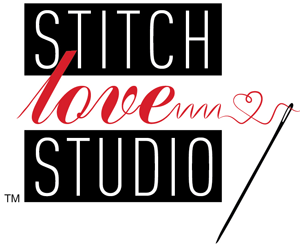 The first word that comes to mind when thinking about bralettes is comfort. The key is “no underwire.” From lounging around to dressing up, there are a variety of options and occasions for wearing bralettes.
The first word that comes to mind when thinking about bralettes is comfort. The key is “no underwire.” From lounging around to dressing up, there are a variety of options and occasions for wearing bralettes.
There are conversations about a certain disappointment after purchasing or trying on a beautiful bralette in a store or online, just to find out that the fit doesn’t work. The truth is that many of the ready-to-wear, mass-produced bralettes on the market are less than perfect when it comes to fit– especially for either small or large bra cups. However, with a little bit of interest in embarking on a sewing journey and finding a sewing pattern with a fit that works, bralettes can be made very quickly. According to the materials we choose and how inspired we get, we can end up with our own creation. A word of caution though; making bralettes can be addictive! So be prepared for making a few more for family, friends or even starting your own business venture!

When we think about the versatility of a bralette, a few bralette types come to mind, each one with its own “personality”:
The “so comfortable” bralette
The cozy thought of getting home after a long day, changing into a favorite loungewear, removing the underwire bra, and reaching out for the cotton, modal, bamboo, tencel or any other soft fabric bralette to complete the experience. Ready to breathe deeper and sip on a warm cup of tea.
The ‘I’m cool” bralette
Made out of unusual materials, usually velvet or even shiny foil prints. These are all different options that will serve as a layering piece, like wearing it under a jacket.
The “romantic or fanciful” bralette
Lace, lace and lace. Also can be combined with stretch meshes or shiny, sparkly fabrics.
The “problem solver” bralette
Tops, dresses or jumpsuits with a low back neck or sheer tops. These are all pieces that can layer on top of a nice lacey, or cool bralette. Any fashion stylist will agree!
The “moody” bralette
It’s all about the prints! Tropical pineapple prints, cozy strawberry prints, funky bat prints, cute macaroon prints, superhero prints, dots, stripes, neon colors, pastel colors… you name it, they will all find the right fit.
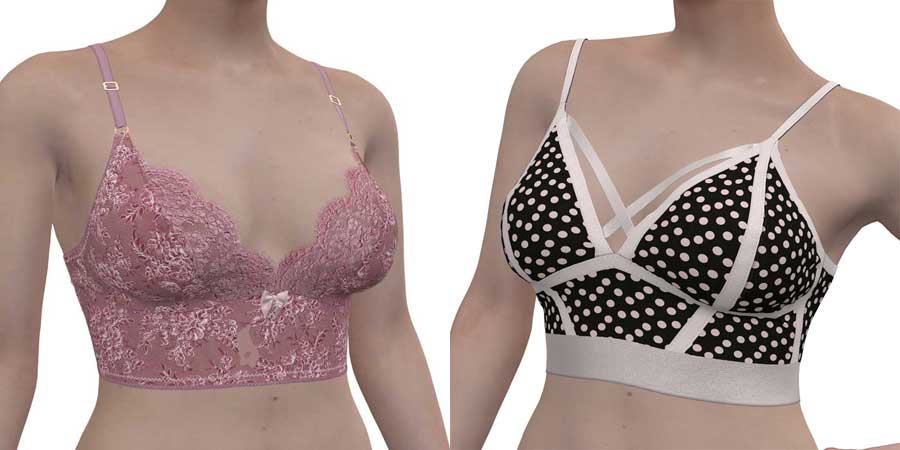
The best news is that all of our bralettes can be made with the same pattern just by changing up the material.
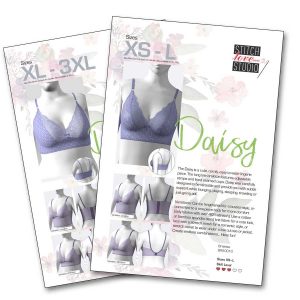 The Daisy is a cute, comfy, easy to make and easy to wear lingerie piece. The long-line bralette features adjustable straps and lined seamed cups. Daisy was carefully designed to be versatile and provide you with subtle support while lounging, playing, sleeping, traveling or just going out.
The Daisy is a cute, comfy, easy to make and easy to wear lingerie piece. The long-line bralette features adjustable straps and lined seamed cups. Daisy was carefully designed to be versatile and provide you with subtle support while lounging, playing, sleeping, traveling or just going out.
Instructions include variations for a lengthened version for a bustier style, or can be converted to a one-piece back for more comfort. If using a lower stretch fabric, follow the variation with hook and eye. Use a cotton or bamboo spandex blend knit fabric for a cute look, lace with a stretch mesh for a romantic style, or stretch velvet to wear under a low cut tee or jacket. Create endless combinations and have fun!
The “Daisy” bralette pattern is available in a downloadable, easy to use, PDF chock full of easy to follow instructions, accompanied by colorful clear photos for every step, to guide you along in your bralette journey. Available in sizes ranging from XS-3XL.
As a proud sponsor of the 2021 National Sewing Month celebration, www.StitchLoveStudio.com is offering 20% off their entire line of Stitch Love Studio brand downloadable PDF patterns for ASG members. Visit the Members Only area of the ASG website to get the code.
~Stitch Love Studio
Q. Independent Pattern Designer
A. Pamela’s Patterns, Pamela Ligett
Q. Name and Number of Pattern
A. Pretty Peplum Top
Q. Fabric Used:
A. Light stretch knit
Q. Special Embellishments/Notions Used
A. Stretch lace for sleeves
Q. Skill level required?
A. Moderate
Q. Are the instructions easy to follow?
A. Yes, including the fitting of proportions
Q. Are you pleased with the finished result? Did it meet your expectations?
A. Very please and have received many compliments!
 Q. Did it look like the picture?
Q. Did it look like the picture?
A. Better with lace sleeves
Q. Did you make any modifications in the pattern?
A. Used stretch lace for the sleeves instead of the knit fabric
Q. Are there any changes you would have made?
A. None
Q. Did the pattern teach you any unique or special techniques?
A. Some good info and techniques about fitting
Q. Would you make this again?
A. Definitely
Q. Would you recommend this pattern to others?
A. Yes
Pattern Link: https://pamelaspatterns.com/products/114-pretty-peplum-top?_pos=1&_psq=PEPLUM&_ss=e&_v=1.0
~Cheryl Huckerby
American Sewing Guild
National Headquarters
9660 Hillcroft, Suite 230
Houston TX 77096
713-729-3000 | 713-721-9230 Fax
www.ASG.org
